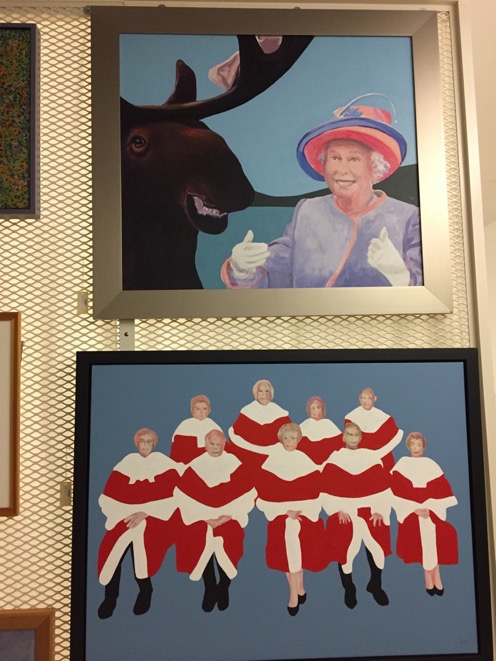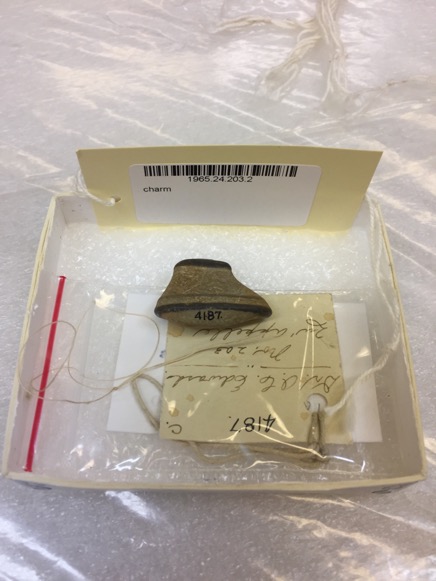Barcoding Project: Location Barcodes
28 April 2017
The University of Alberta Art Collection (UAAC) contains over 10,000 objects, more than 50 different categories of objects, and 300 different types of materials—as such, the task of barcoding 10% of its holdings presented many challenges and learning opportunities for the University of Alberta Museums team.
By the end of the project term, 4043 objects were given a unique barcode label. Of these 4043 items, 1141 had a barcode label directly attached to the object using a tag. The remaining 2902 objects have associated barcodes printed on inventory reports, which are stored with the objects in question. These barcodes were created and associated with their objects over a period of several weeks. For a recap of our first object barcoding attempt, see the previous post on object barcodes in the Print Study Centre.
For many objects, the easiest method of attaching a barcode label was with a tag. An adhesive label with basic information about the object and an associated barcode was adhered to a conservation-approved acid-free paper tag, which was in turn attached to a robust part of the object where it could be seen without being intrusive.




There were some occasions where it made more sense to attach a tag adjacent to an object instead of directly to it, such as when a framed work was hanging on a rack, or where a textile had no buttonholes or ties to attach a tag to.


so it has been tucked into the object’s tray.
Particularly small or delicate objects had the tag stored with them in their individual boxes and trays wherever possible.

its tray so as to avoid compromising the object’s stability.
Of course, it is not always possible to attach a barcode label or tag directly or adjacent to an object—such is the case, for example, with large albums where individual pages are given their own accession numbers, or for large pieces of public art. For these scenarios, a barcode inventory sheet can be generated through Crystal Reports, which can be printed as needed by collection staff, kept centrally for use, or stored with the object.
Collection staff must use their training and judgement to determine the best method of barcoding for each object; however, with these approaches, it is possible to barcode all of the categories of objects and materials represented in the University of Alberta Art Collection.